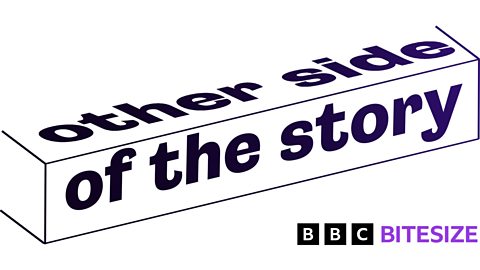Polar-what?!
Everyone wants to be heard, but on social media, views can be extreme, with little compromise, and this can lead to polarisation.
Polarisation explained
Polarisation fuels a lot of the conversation that we see online. In real life most of our views come with a side dish of nuance, the subtle differences and detail, but when your word count is limited, you usually only have room for the main! So, check out our short video below on polarisation and the effect it can have.
Welcome to âPolarisation For The Nationâ. The game that rewards disagreement and says get lost to reason to reason debate. My name is Eman and we're joined here by two wonderful contestants. Tell us your name please.
Iâm Baz
Iâm Gaz
OK, this is a game of love and hate. Us versus them. Yes or no. It's a game of ⊠polarisation!
Polar what?
Polarisation! Have you ever noticed that when you go online everyone's always shouting at each other like everyone's views are so extreme. Well, that's polarisation, my friends. Itâs what keeps us engaged on social media. Everyone loves a flame war, right?
OK, let's play our first round. Love or hate.
The rules are simple. I want a love or hate answer. There's no in between. You get me? OK, here we go. Pineapple pizza.
Hate
Love
Marmite
Hate
Love
Taylor Swift. Love, hate?
Um, I didnât really like her last album
BUZZ
Oh dear player two. I'm sorry, we don't have any time for nuances.
Nu⊠what?
Nuance. That's all the detail and the context, the stuff that makes life more complicated and interesting. We don't have time for that here. We just want love or hate. You see on social media, there's no time for complexity. It's gotta be sure. It's gotta be fast. It's gotta be extreme. When we are all yelling at each other. It keeps us engaged on social media.
Let's play another round. Let's play spin the wheel of polarisation.
Okay contestants, I want you to both talk about which team you support? What team do you support?
Arsenal, you?
Iâm a Tottenham fan.
And they are off. We can see there's a lot of nuance in this discussion. Baz says something and Gaz listens. Thinks, then answers respectfully. Let's have a look at my outrage meter. We can see the needle is gently moving around in the grey zone here. We need more polarisation. Let's play our polarisation card here. It will bring up only the most extreme views that are likely to get the biggest response and boiled down the arguments, overly simplistic extremes. Pressing that button⊠now.
Boom!
Thatâs more like it. Look at the needle now. Itâs going wild and theyâve done it. Look at that. No grey area! No Nuance! No Compromise! Outrageous! Check it out, their argument is completely polarised.âŻThey are like the north pole and the south pole. Miles apart. They are never going to meet in the middle. It's like a social media pile on. Woo. What a match.
That's all for today, folks. Join us again next week where we play âPolarisation For The Nation.â
Why is nuance important?
Life is very rarely binary, and nor are opinions. When engaging in online discussion it can be very easy to get into shouting matches and forget about nuance or reasoned debate. For example, when you love something, it can be very easy to decide that itâs âthe bestâ â but terms like that leave little room for nuance.
As youâre scrolling through your feeds and confronted with opinion after opinion, make sure you look out for words like âbest and worstâ or âlove and hateâ as these may be tell-tale signs of polarisation.

Not sure if the news youâre seeing on social media is true or false? Can you always tell if the things you see online are real or fake? Learn how to get the other side of the story with our quizzes, videos and explainers.


